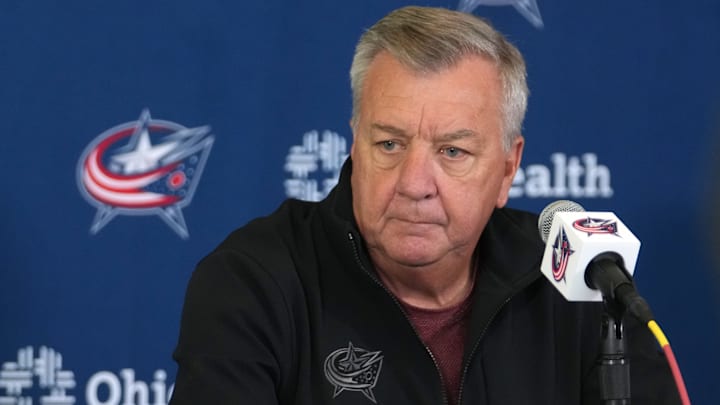There are a lot of positives to take from coming up just short. The team improved mightily this season, which means the expectations will be higher next year. The young players on the roster got a taste of meaningful hockey late in the year, and what it will take to get over the hump. It's easy to see how the entire organization benefits from the steps they took this year.
While I still expect them to face some growing pains - especially if they do make a playoff run in the near future - the plan has now shifted to climbing out of the depths of the rebuild and finding a way to compete for a Stanley Cup. As we watch the Eastern Conference playoffs, it's not hard to pick apart just how far this team is from doing that.
Put simply, as much as it hurts to say: even if they had made the playoffs this year, they weren't going to contend for a Cup. I do think they would have given the Washington Capitals a better run than the Montreal Canadiens did. But, would they have won that series? It's hard to say.
Even if they did win that series, were they built to knock off the Carolina Hurricanes in the second round? That's extremely doubtful. The reality of this season is that we were probably only robbed of another 5-10 Blue Jackets games, had they made the playoffs. Sure, it would have been fun. But, it's not the end of the world, and missing the playoffs means they will be even hungrier next year.
Ideally, the team will have better ingredients in the mix. I'm sure Don Waddell and the entire organization are paying attention, because this year's playoffs are proving that there are a few things missing here. Let's dig in.
You have to have elite scoring talent.
This one may seem obvious, but it does seem to be lost with some organizations. Look no further than a team like the one mostly built by our own GM: the Carolina Hurricanes. The analytical darlings of the NHL always have a great regular season, but just can't quite seem to get over the hump in the playoffs.
Why is that? One could look to their lack of having elite scoring talent on their roster as an issue. Their leading scorer this season was Sebastian Aho, whose 29 goals and 74 points are honestly pretty solid. But, beyond him, they had only one player exceed 60 points (Seth Jarvis, 67); while not a single additional player hit the 50 point mark.
While the old adage "defense wins championships" is certainly true, you have to be able to score goals to win in the playoffs. Especially in this modern day NHL. Hockey Prospecting's Byron Bader shares this chart every spring, and it's eye opening. If averages are to be believed, you simply need a certain number of star producers to win a Stanley Cup. If you're wondering, here's how the Blue Jackets stacked up this year.
Certainly, their youth is getting them closer to that "star producer" threshold (0.70 points per game for forwards, 0.45 for defensemen; minimum 200 NHL games played). Zach Werenski, Adam Fantilli, Kirill Marchenko, and Kent Johnson are a great start. Maybe Sean Monahan keeps producing at a high level. Perhaps Yegor Chinakhov can find his way. But, even so, they probably still need more production to match up against the league's best teams. And, there are other important areas to consider here as well.
A tall, heavy defense corps that can skate.
This is a topic we touched on just two weeks ago. In today's NHL, your defense corps needs to be big and mobile to hold up against the rigors of a long playoff run. Recent Stanley Cup winning teams average around 6'3" and 222 pounds on the back end.
Taking that into consideration, the Blue Jackets are pretty undersized on the back-end. In fact, from last year's team, only Erik Gudbrason exceeds those measurements. Zach Werenski (6'2", 211) and Damon Severson (6'2", 204) are close; but overall, the team clearly needs to get bigger within its defense corps.
Despite what Don Waddell has said about running it back with the same group next year, I do expect major changes to the blue line this summer. Don't be surprised if adding size is a key area of focus here. His next moves may involve filling out some key areas of depth. We'll look at those on the next slide.
